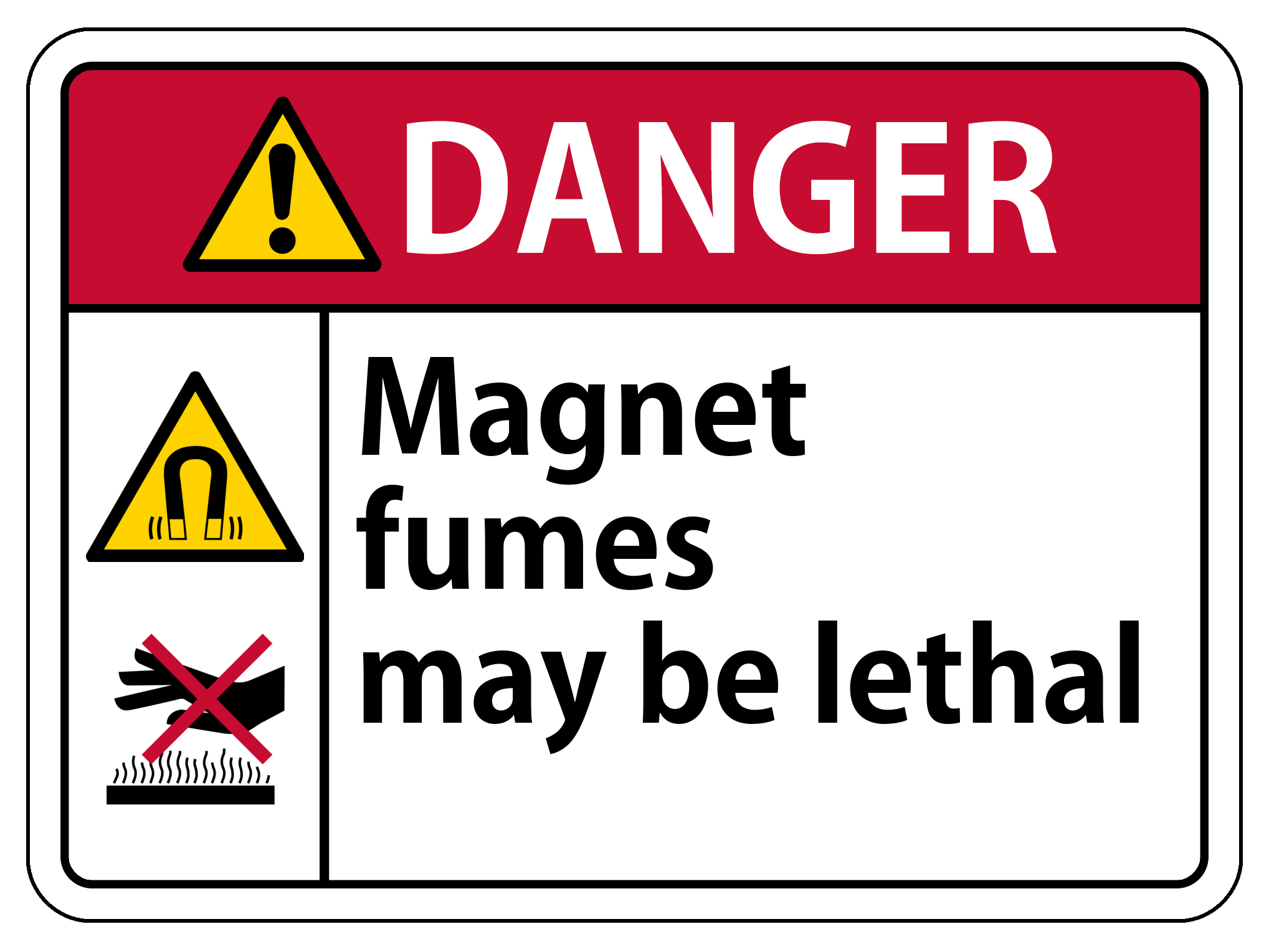|
 12/9/15 edit: OP updated with new Things I Won't Work With links The PYF obsolete and failed technology thread has derailed into a discussion of dangerous chemistry, largely sourced from chemist Derek Lowe's Things I Won't Work With blog and a few from Ignition! An Informal History of Liquid Rocket Propellants (After a couple of back-and-forths, Ignition! is apparently not public domain so I won't link to it but there are scans of it everywhere.) It started with a discussion of the volatility of nitrocellulose film and difficulty of extinguishing it when it catches fire, carbon tetrachloride, which will extinguish nitrocellulose fires but is nasty stuff capable of causing multiple organ failure, and touched on such wonderful things as a mercury-fueled rocket and a number of delightful chemicals that can and will kill you with little or no provocation. I'll start us off with a few. FOOF http://blogs.sciencemag.org/pipeline/archives/2010/02/23/things_i_wont_work_with_dioxygen_difluoride The namsake of this thread, FOOF is a powerful oxidizer that tends to blow up on contact with lots of things. From Wikipedia quote:Dioxygen difluoride reacts with nearly every chemical it encounters – even ordinary ice – leading to its onomatopoeic nickname "FOOF" (a play on its chemical formula). Chlorine Trifluoride http://blogs.sciencemag.org/pipeline/archives/2008/02/26/sand_wont_save_you_this_time From Things I Won't Work With quote:In a comment to my post on putting out fires last week, one commenter mentioned the utility of the good old sand bucket, and wondered if there was anything that would go on to set the sand on fire. Thanks to a note from reader Robert L., I can report that there is indeed such a reagent: chlorine trifluoride . quote:”It is, of course, extremely toxic, but that's the least of the problem. It is hypergolic with every known fuel, and so rapidly hypergolic that no ignition delay has ever been measured. It is also hypergolic with such things as cloth, wood, and test engineers, not to mention asbestos, sand, and water-with which it reacts explosively. It can be kept in some of the ordinary structural metals-steel, copper, aluminium, etc.-because of the formation of a thin film of insoluble metal fluoride which protects the bulk of the metal, just as the invisible coat of oxide on aluminium keeps it from burning up in the atmosphere. If, however, this coat is melted or scrubbed off, and has no chance to reform, the operator is confronted with the problem of coping with a metal-fluorine fire. For dealing with this situation, I have always recommended a good pair of running shoes.” https://www.youtube.com/watch?v=M4l56AfUTnQ Hexanitrohexaazaisowurtzitane http://blogs.sciencemag.org/pipeline/archives/2011/11/11/things_i_wont_work_with_hexanitrohexaazaisowurtzitane Quite possibly the most fun to say of the bunch, and it's notable for becoming more stable when you mix it in a 1:1 ratio with TNT. From Things I Won't Work With quote:Hexanitro? Say what? I'd call for all the chemists who've ever worked with a hexanitro compound to raise their hands, but that might be assuming too much about the limb-to-chemist ratio. Nitro groups, as even people who've never taken a chemistry class know, can lead to firey booms, and putting six of them on one molecule can only lead to such. And since there are six nitrogens and six nitro groups, the first assumption must be that these are all bonded to each other. I mean, come on, leaving the nitro groups attached to the carbons is for wimps. So that means that someone, somewhere, has perversely made a poly-N-nitro cage compound, as if they'd been dared to cram the most bond energy into the smallest space. Hydrofluoric Acid HF is an incredibly useful solvent in a number of industries. It is also known as bone-seeking acid because it readily penetrates tissue and starts leaching calcium out of your bones and calcium and magnesium from blood. Burns can easily go unnoticed as it rapidly destroys nerves and visible damage doesn't appear until hours to a day later. The delay in symptoms leads to delays in treatment, which just compounds the problem. Once it penetrates tissue, it's too late to wash it off. HF is produced as a combustion product of fluorine compounds, and makes electrical substation fires an even bigger hazard to emergency personnel because they have to worry about their bones being dissolved in addition to not getting electrocuted. Get your very own NFPA 444 sign right here! Well What Now posted:Speaking of which, you can buy your own bigass 4-4-4-OX warning sign and put it on anything. GWBBQ has a new favorite as of 14:40 on Aug 12, 2023 |
|
|
|

|
| # ? Apr 26, 2024 16:49 |
|
I'm already loving this thread, especially for the blog most of your quotes come from. Derek Lowe's writing style is delightful and I've been linked to a few of his pieces in the past, it's an inspiration to see a Chemist who can talk so entertainingly about pretty sciency stuff without it requiring years of study to understand. Granted, I had those, but I know for a fact that for example students of French can still get a heartly laugh (and scare) from his stories. Now to annoy my buddy who seriously considers going into Fluoride chemistry "for the excitement". Child's play. In a few years, I'll post the E/N thread "Drove my friend to suicide by insane chemical, feel like drowning myself in organic solvents to make up for it".
|
|
|
|
Yay! Unstable chemicals! Nitrogen Triiodide So unstable it can explode due to a slight breeze, or alpha radiation. Video, Set it off with a feather. https://www.youtube.com/watch?v=2KlAf936E90
|
|
|
|
Say Nothing posted:Yay! Unstable chemicals! How did they get the material in place without it detonating so they could run the test?
|
|
|
Ultimate Mango posted:How did they get the material in place without it detonating so they could run the test?
|
|
|
|
|
Dimethyl mercury is pretty loving  A relatively tiny amount can cause a long slow death. Gloves? gently caress 'em it'll go right through a lot of types of gloves!
|
|
|
|
Chlorine trifluoride is nice but bromine pentafluoride is better. It's used for mass spectrometric analysis because it vaporizes rocks. Also when it reacts with water it created a cloud of HF gas.
|
|
|
|
This is still my favorite thing from that blog https://www.youtube.com/watch?v=uixxJtJPVXk
|
|
|
|
I've always loved Alkali metals. There's something about a material which blows up - in its purest form when in contact with water. Edit: beaten.. I left the post linger too long (20 minutes!) To make up for this, here's a video displaying sulfuric acid mixed with sugar
|
|
|
|
TZer0 posted:I've always loved Alkali metals. Here's 20,000lbs of wartime surplus sodium metal vs. a frozen alkaline lake. https://www.youtube.com/watch?v=HY7mTCMvpEM
|
|
|
|
Octanitrocubane. Has one of the highest explosive velocities in existence, at 10.1km/sec. Fairly stable as I recall, would be used as a high explosive but synthesizing cubane isn't easy and it's not exactly cheap from natural sources either. A conjectured allotrope of nitrogen, octaazacubane. Yep, that's N8. Nope, I don't think it's possible to create it, but I'm tempted to see if I can track down that group in Germany whose highly nitrogenous work is frequently featured on Things I Won't Work With. If they succeed, they should probably try octanitrooctaazacubane next.
|
|
|
|
That's ... quite a bit of bond energy in a small space. Looking at the Wikipedia article on Octaazacubane led me to this paper about Hexacontaazabuckministerfullerane http://www.sciencedirect.com/science/article/pii/S0009261403010583 That's a buckyball with nitrogen substituted for all 60 carbon atoms, and they think it may be possible to synthesize it. Energy released by dissociation into nitrogen molecules would be 1622.9 kcal/mol 
GWBBQ has a new favorite as of 05:17 on Jan 12, 2014 |
|
|
|
Oh, chemistry, you be cray-cray. Looking forward to seeing and learning about more crazy poo poo.
|
|
|
|
I've always been fond of this combination. https://www.youtube.com/watch?v=ritaljhhk7s quote:
|
|
|
|
WebDog posted:I've always been fond of this combination.
|
|
|
|
That's what they used to make snake fireworks out of before environmental regulations and common sense colluded to stop allowing children to handle mercury compounds and set them on fire.
|
|
|
|
Yeah, I remember having a little indoor fireworks set as a kid in the late 70s and it included a very small version of that elephant's trunk or pharaoh's snake effect. I also had a great chemistry set and my mum would go buy me chemicals I asked her for. No idea how toxic any of those might have been, but I wasn't stupid enough to taste them. Hmm, I wonder if that kit is still knocking around somewhere? I'll have to search for it and see how bad the stuff I was playing with was.
|
|
|
|
Hexyflexy has a new favorite as of 13:51 on Aug 23, 2018 |
|
|
|
Let's have some thermite action. From the British show Braniac, thermite vs. liquid nitrogen, a car engine block and fuel tank. https://www.youtube.com/watch?v=rdCsbZf1_Ng
|
|
|
|
Thermite is cool, but it's not really something that goes FOOF in the night. It's very hard to to light (although magnesium does the trick) and otherwise only really dangerous if you snort it. Iron oxide and aluminum dust is not a pretty thing to inhale, but other than that, it's extremely benign.
|
|
|
|
Does the Golden book of Chemistry count? Despite it's hyped up reputation of being a "banned" book. In reality it just went out of print, then resurfaced in the 90's as people went a bit hysteric over the fact it taught you to make chlorine gas from household materials. If anything it's severely lax in regards to safety standards, no one in the book is wearing any safety gear, not even the scientist. The book opens by imploring you to grab whatever been lying around the house to use as, such as creating beaker stands from twisting coat hangers or converting old perfume bottles into wick burners. The whole book has this whimsical innocence about it, for instance describing Marie Curie's discovery of uranium via her enchanted glowing shed. Neglecting to note the downsides. It being the 60's the future is nuclear! And then the fun begins, such as taking apart a battery with a can opener to scoop out manganese dioxide. Or filling a bottle up with hydrochloric acid, zinc and water to inflate a balloon. Along with other basic creations like hydrogen, ammonia and iodine or playing around with lye and learning how to make and set fire to boric acid and magnesium. None of the experiments even suggest much in the way of safety other than "oh make sure this doesn't catch fire" or "cover with towel in case it explodes". According to it's reference charts everything was obtainable at a chemist or drug store at the time. I'm sure half of these are highly regulated nowadays.
|
|
|
|
KozmoNaut posted:Thermite is cool, but it's not really something that goes FOOF in the night. It's very hard to to light (although magnesium does the trick) and otherwise only really dangerous if you snort it. On the flipside, it is a positive nightmare to put out if you do manage to light it on fire.
|
|
|
|
Computer viking posted:On the flipside, it is a positive nightmare to put out if you do manage to light it on fire. Well yeah, self-oxidizing compounds tend to have that downside 
|
|
|
|
Well, if you want unstable chemicals, i've work in one lab where there's been a dried-up bottle of Picric Acid at the back of the cupboard which no one wanted to touch. I was slightly concerned about an ancient, half empty bottle of ether in my last laboratory, as ether can form explosive peroxides in the presence of air. Apart from that, I haven't really worked with much dangerous stuff, as I mostly deal with inorganic chemistry.
|
|
|
|
TZer0 posted:To make up for this, here's a video displaying sulfuric acid mixed with sugar I prefer this method of making big carbon dongs, it's more interesting: https://www.youtube.com/watch?v=h4pNXAtPJp8 Still regret not seeing this video before I finished my degree and couldn't dick around in the chemistry department anymore.
|
|
|
|
Say Nothing posted:Well, if you want unstable chemicals, i've work in one lab where there's been a dried-up bottle of Picric Acid at the back of the cupboard which no one wanted to touch. Some dude near where my parents live had like 250 liters of ether in his basement, from when he used to fly model airplanes. After a news segment on TV concerning the dangers of stored ether in school laboratories, he phoned the local fire department and asked them what he should do with 250 liters of potentially very unstable ether. Their response was "Sleep somewhere else tonight, the bomb disposal unit will be there first thing in the morning".
|
|
|
|
KozmoNaut posted:Thermite is cool, but it's not really something that goes FOOF in the night. It's very hard to to light (although magnesium does the trick) and otherwise only really dangerous if you snort it.
|
|
|
|
Say Nothing posted:Yay! Unstable chemicals! I have a story about this stuff.. Back in my school days, Chemistry was the only subject that I really excelled in. My love of practical chemistry caught the eye of my amazingly charismatic (and somewhat insane) polish Chem teacher (this guy- http://en.wikipedia.org/wiki/Zbigniew_Szydlo) when I was in the lower 6th (17 years old), who had a side job of doing lectures in schools and universities around the south of England. He needed an assistant for his lectures, and recruited me to help out. As the wiki article describes, his lectures used a /lot/ of pretty violent chemistry- regularly I'd be found in the lab preparing nitrocellulose gun-cotton, thermite and other stuff that a 17 year old really had no reason to be doing. But to get to the point, in spring 1999 we were invited to do a demonstration at a girl's school in Eastbourne, about an hour and a half from the school. The high-point of the finale would be a demonstration of rockets powered by gun-cotton being fired down wires along the length of the auditorium into little parcels of nitrogen triiodide, while assorted other things bubbled, changed state or blew themselves to pieces for the delectation of the audience. We mixed all the chemicals up and set off from the school in his horrible clapped out Triumph Herald (I literally had to hold the door shut at one point). I had 20l of liquid nitrogen in a vacuum flask between my legs, half a pound of guncotton sitting on my lap and on top of that the parcels of triiodide, carefully moistened with ammonia. As stated, it's stable when wet- but this is time limited. And we hit traffic on the motorway. Sitting there with literally a bomb that could be set off with a feather resting in my crotch was certainly one of the more nervewracking journeys of my life, as time ticked on. Eventually we got to the school almost 45 minutes late, and putting it bluntly we were out of time. The iodide exploded literally thirty seconds after we pulled up and got out of the car- I tossed it behind a tree when we saw how dry it was. It went off loudly, and blew a small flowerbed to pieces. So yeah, that's how chemistry nearly killed me. Frankly I'm amazed looking back that Andrew was able to get away with it all- most of the experiments we did were completely banned in state schools at the time even for demonstration.
|
|
|
|
Say Nothing posted:Let's have some thermite action. Speaking of melting engine blocks - I only found out a couple years ago that mercury will, if allowed access to a fresh scratch in the oxide layer, attack the poo poo out of aluminum. I could swear someone in AI did that to a junked aluminum block. It's not personally super-dangerous outside the usual caveat that it's a heavy metal. Unless you were to, say, bring a mercury-based thermometer aboard an airplane and have it crack and leak onto an aluminum frame element during a flight. And it turns out the FAA does have regulations about keeping big thermometers and barometers inside leakproof containers.
|
|
|
|
Camrath posted:We mixed all the chemicals up and set off from the school in his horrible clapped out Triumph Herald (I literally had to hold the door shut at one point). I had 20l of liquid nitrogen in a vacuum flask between my legs, half a pound of guncotton sitting on my lap and on top of that the parcels of triiodide, carefully moistened with ammonia. Not that you needed all that for the trip, but once you get locked into a serious chemistry collection, the tendency is to push it as far as you can.
|
|
|
|
KozmoNaut posted:Thermite is cool, but it's not really something that goes FOOF in the night. It's very hard to to light (although magnesium does the trick) and otherwise only really dangerous if you snort it. We had a lot of trouble with magnesium ribbon at a goonmeet I hosted in 2012. Fortunately I had a jar of magnalium (thermite made with an alloy of magnesium and aluminum, easy to light with a blowtorch and burns hot enough to light pure aluminum thermite) and fellow AI/DIY goon sharkytm had brought a stash of expired safety flares which also work quite nicely, so we had no problems burning the 32lbs of thermite I had on hand. Road safety flares are my favorite ignition method, honestly, because they are around 9" long, strike on the included striker, and disposable. Also cheap, and they illuminate the area so you can find the thermite even if you're lighting it at night and had your night vision completely destroyed by the last thermite charge. I'm not sure that iron/aluminum thermite really belongs in this thread, but it's awesome. Copper oxide/aluminum thermite, on the other hand, definitely belongs here. It releases a hell of a lot more molten metal a lot faster (because of how the stoichiometry works out since the copper in black copper oxide has a lot lower oxidation state than the iron in red iron oxide), so it's actually a severe hazard, if you aren't extremely careful you will be very badly burned as it splatters the produced liquid copper in every direction. kastein has a new favorite as of 19:05 on Jan 13, 2014 |
|
|
|
Keru posted:Not that you needed all that for the trip, but once you get locked into a serious chemistry collection, the tendency is to push it as far as you can. Really, Szydlo was the best possible example of a genuine mad scientist that I've ever met. I should totally look him up one of these days.
|
|
|
|
KozmoNaut posted:Some dude near where my parents live had like 250 liters of ether in his basement, from when he used to fly model airplanes. After a news segment on TV concerning the dangers of stored ether in school laboratories, he phoned the local fire department and asked them what he should do with 250 liters of potentially very unstable ether. Their response was "Sleep somewhere else tonight, the bomb disposal unit will be there first thing in the morning". When I worked for a large oil company (even though I was in the IT department), everyone had to take mandatory hazardous materials training because they stored all sorts of interesting compounds on site (it was a research office). The course was called (I forget his name but will say) "Bob's Story" and was presented by a guy called Bob who had no hands, no eyes, and not much that you would recognise as "skin" either. Bob was now employed by the company to deliver safety lectures. When a man who looks like a melted waxwork tells you this safety poo poo is important, you listen. Bob used to be a tanker driver and delivered a truck full of ether to a glue factory. There was a leak in the valve attaching the delivery hose to the truck, and unknown to him (because he hadn't carried out the required checks) it was leaking out into the atmosphere and forming all sorts of compounds that you definitely don't want to light a cigarette anywhere near. Which is what he did. So yeah, don't gently caress with Ether, unless you want to literally be a walking, talking warning to others.
|
|
|
|
Goddamn, I bet that lecture scared some suckers straight. I attended a similar lecture, although not nearly as severe. It was a lecture on road safety, how you shouldn't drive tired, drive too fast, that sort of thing. The dude giving the lecture was in a wheelchair precisely because of a 100% preventable accident, and we had to sit through a graphic explanation of exactly what happened, how it ruined his life, caused him to split up with his girlfriend because of his depression and physical impairment (he split up with her, not the other way around, depression's a bitch), all redtold by a wheelchair-bound man on the verge of tears. Actually, the worst part of it was his description of how he woke up in the hospital, all tubed-up and everything, unable to feel anything below the waist, to see his otherwise 100% stoic father absolutely bawling his eyes out. That really made a huge impact on me, those sorts of lessons always work better when told by someone who's actually lived the consequences. kastein posted:burning the 32lbs of thermite I had on hand. Why am I not surprised?
|
|
|
|
kastein posted:We had a lot of trouble with magnesium ribbon at a goonmeet I hosted in 2012. Fortunately I had a jar of magnalium (thermite made with an alloy of magnesium and aluminum, easy to light with a blowtorch and burns hot enough to light pure aluminum thermite) and fellow AI/DIY goon sharkytm had brought a stash of expired safety flares which also work quite nicely, so we had no problems burning the 32lbs of thermite I had on hand. I prefer the method Szydlo taught me for ignition- barium peroxide oxidiser topped off with potassium permanganate and glycerol. Then just gob on top of the mixture to provide water as a catalyst, and retire to a safe distance. ...The more I look back on this with adult eyes, the more I realise that the man might be genuinely mad.
|
|
|
|
I don't know if it qualifies, being a natural compound and all, but you gotta gives props to what is likely deadliest toxin in the world: Botulinuum Toxin. Which, of course, causes botulism. Produced by the Clostridium botulinum bacterium. quote:Botulin toxin produced by C. botulinum is often believed to be a potential bioweapon as it is so potent that it takes about 75 nanograms to kill a person (LD50 of 1 ng/kg,[26] assuming an average person weighs ~75 kg); 1 kilogram of it would be enough to kill the entire human population. For comparative purposes, a quarter of a typical grain of sand's weight (350 ng) of botulinum toxin would constitute a lethal dose for humans. There's even a variety of the toxin that's DEADLIER than that: quote:An eighth toxin, type H, was discovered by researchers at the California Department of Public Health in 2013. With a lethal dose of 2 ng by injection or 13 ng by inhalation, it was deemed the most toxic substance on Earth. Two nanograms will kill you.  That's an impossibly small amount. And there are people voluntarily injecting this poo poo in their face just to temporarily rid themselves of wrinkles. Edit: Fixed links. DrBouvenstein has a new favorite as of 21:35 on Jan 13, 2014 |
|
|
|
KozmoNaut posted:Thermite is cool, but it's not really something that goes FOOF in the night.
|
|
|
DrBouvenstein posted:
That somehow weirds me out even more then Webdog's thing. How does that work?
|
|
|
|
|
Has anyone figured out what exactly is going on there? It's gotta be some reaction, right?
|
|
|
|

|
| # ? Apr 26, 2024 16:49 |
|
DrBouvenstein posted:Botulinuum Toxin. Which, of course, causes botulism. Produced by the Clostridium botulinum bacterium. For about 5 years I was terrified to eat anything from cans because my bio teacher in HS told us about someone who had a can that was infected with botulinuum, took one taste of the contents and dropped dead on the spot. I am an avid cook and very aware of food sanitation but I will probably never make preserves for this specific reason.
|
|
|













































